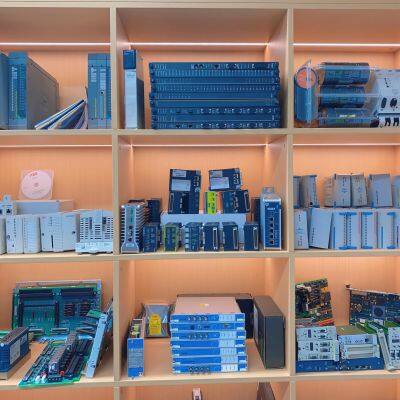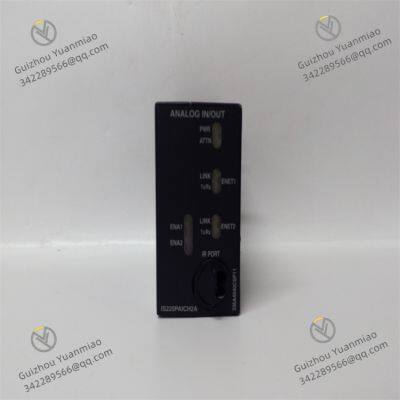Product Description
GE VM Series Single-board Computer - 02
I. Overview
GE IS220PAICH2A is a high-precision analog input module specifically designed for industrial-grade process control and monitoring. As a core component of the GE Mark VIe series control system, it is positioned as an "analog signal acquisition hub". It focuses on addressing the precise acquisition needs of continuous parameters such as temperature, pressure, flow rate, and liquid level in industrial scenarios, providing reliable front-end signal support for the control and protection of critical equipment like gas turbines, steam turbines, and chemical reactors, thus ensuring the stable operation and accurate regulation of industrial automation systems.
This module features core advantages of "multi-channel high-precision acquisition + wide range adaptation + strong environmental resistance":
Equipped with 16 differential analog input channels, it supports mainstream industrial signal types including 4-20mA and 0-10V, with a measurement accuracy of ±0.1% F.S., enabling the capture of microamp-level signal changes.
It is compatible with GE Mark VI, Mark VIe, and Mark VIeS series control systems, allowing seamless integration without complex adaptation.
Simultaneously, it is designed with wide temperature adaptability (-20℃~+60℃), electromagnetic interference resistance, and oil/dust proofing, enabling continuous and stable operation in harsh industrial environments such as power plants, petrochemical facilities, and heavy manufacturing.
Compared with ordinary analog input modules, it has significant advantages in channel density, measurement accuracy, and system compatibility. Compared with third-party acquisition modules, it is natively compatible with GE turbine control systems and supports fault self-diagnosis and redundant backup, making it a key component for building high-reliability industrial monitoring systems.
As a mainstream analog input module in the Mark VIe series, IS220PAICH2A is widely used in scenarios such as gas turbine exhaust temperature monitoring, chemical reactor pressure acquisition, and power plant boiler liquid level measurement. It provides accurate data support for condition monitoring, process control, and safety protection of industrial equipment, and is a core technical equipment for improving industrial production efficiency and ensuring the safe operation of equipment.

II. Technical Specifications
(I) Core Acquisition and Measurement Parameters
(II) Electrical and Power Parameters
Power Requirements: Operating voltage is 24V DC (with wide adaptation range of 20.4V DC~28.8V DC), powered by the backplane of the Mark VIe system rack; operating current ≤300mA (without expansion module), full-load current ≤500mA (16 channels operating simultaneously + expanded RTD module); power consumption ≤12W (powered by 24V DC under full-load condition); supports reverse power connection protection (no damage under reverse voltage ≤36V DC); built-in overcurrent protection (current limiting triggered when current exceeds 600mA).
Electrical Isolation: Analog input channels are optically isolated from the module's internal circuit (isolation voltage ≥2500Vrms); dual isolation between the power circuit and signal acquisition circuit prevents ground loop interference and external voltage intrusion, protecting the module's core circuit.
Grounding Requirements: Supports single-point grounding (ground resistance ≤1Ω); signal ground, power ground, and chassis ground are led out independently, with dedicated grounding terminals to reduce measurement errors caused by grounding interference (errors can be reduced to within ±0.05% F.S.).
(III) System Compatibility and Communication Parameters
System Compatibility: Fully compatible with GE Mark VI, Mark VIe, and Mark VIeS control systems; supports collaborative operation with IS220PPRFH1A (PROFIBUS module) and IS220UCSAH1A (CPU module); compatible with GE Speedtronic Turbine Control software, allowing configuration of channel parameters (range, filter frequency, alarm threshold) via software.
Communication Interface: Communicates with the CPU module via the Mark VIe system backplane bus; communication rate of the backplane bus is 100Mbps; data update cycle ≤10ms (for simultaneous acquisition of 16 channels); supports upload of module status information (e.g., channel fault, power status) for real-time viewing via HMI.
Diagnostic Data Output: Built-in channel fault diagnosis function, supporting error code output (e.g., E01 = channel open circuit, E02 = signal out of range); diagnostic data is transmitted to the CPU module via the backplane bus, facilitating quick fault location for maintenance personnel.
(IV) Environmental Parameters
Operating Environment: Operating temperature range -20℃~+60℃, supporting low-temperature startup (no preheating required at -20℃, startup time ≤30s); storage temperature range -40℃~+85℃; humidity range 5%~95% (non-condensing, complying with IEC 60068-2-3 standard).
Vibration and Shock Resistance: Vibration resistance rating 5g (10Hz~500Hz, complying with IEC 60068-2-6); shock resistance rating 20g (11ms pulse, complying with IEC 60068-2-27), adapting to the vibration environment of equipment such as turbines and compressors.

III. Functional Features
(I) Multi-Channel High-Precision Acquisition for Capturing Subtle Signal Changes
With "16-channel differential acquisition + 16-bit resolution" as its core, GE IS220PAICH2A enables accurate capture of analog signals:
16-Channel Independent Acquisition: The 16 differential channels can simultaneously acquire different types of signals, adapting to multi-parameter monitoring scenarios. For example, in a gas turbine control system, 4 channels acquire turbine bearing temperature (PT100 signal), 6 channels acquire combustion chamber pressure (4-20mA signal), and 6 channels acquire fuel flow rate (0-10V signal). The 16 channels perform synchronous sampling (sampling rate 100Hz) with a data update cycle ≤10ms, ensuring comprehensive monitoring of the turbine's operating status.
±0.1% High-Precision Measurement: The 16-bit resolution and ±0.1% F.S. accuracy enable capture of microamp-level signal changes. For example, in chemical reactor pressure monitoring, the reactor's operating pressure range is 0-1MPa (corresponding to 4-20mA signal). When the pressure changes by 0.1kPa (0.01% of the range), the module's output current changes by 0.0032mA. The CPU module can accurately identify this change, providing early warning of pressure anomalies to prevent reaction out of control.
Wide Signal Type Adaptation: Supports current, voltage, thermocouple, and RTD signals (expansion required), reducing the types of modules needed. For example, in power plant boiler monitoring, without replacing the module, only software configuration is required to realize the acquisition of boiler feedwater pressure (4-20mA), steam temperature (Type K thermocouple), and economizer wall temperature (PT100), simplifying the system architecture and reducing costs.
(II) Strong Anti-Interference Design for Adapting to Complex Industrial Environments
In response to electromagnetic interference and signal noise in industrial sites, the module enhances anti-interference capabilities through hardware isolation and software filtering:
Inter-Channel and System Isolation: 250Vrms inter-channel isolation and 2500Vrms system isolation prevent signal crosstalk. For example, in a steel mill rolling mill control system, the module simultaneously acquires rolling mill hydraulic pressure (4-20mA) and motor winding temperature (PT100). Inter-channel isolation prevents electromagnetic interference (50Hz power frequency interference) from the hydraulic system from affecting temperature acquisition, reducing the temperature measurement error from ±0.5℃ to ±0.1℃.
Digital Filtering and Noise Suppression: Adjustable low-pass filtering and high CMRR filter out environmental noise. For example, in petrochemical pump group monitoring, mechanical vibration generated by pump operation causes high-frequency 100Hz noise in the pressure signal. By setting a 20Hz low-pass filter, the module reduces the noise amplitude from ±0.5mA to ±0.05mA, improving pressure measurement accuracy by 10 times.
Overload and Overvoltage Protection: Overload protection for current/voltage channels prevents module damage caused by sensor faults. For example, when a pressure sensor line is short-circuited (output current 35mA), the module's current channel triggers overload protection (current limiting to 30mA), ensuring no module damage. After the fault is resolved, acquisition resumes automatically without module replacement, reducing maintenance costs.
(III) In-Depth System Compatibility for Simplifying Integration and Maintenance
The module is seamlessly compatible with GE Mark series systems, enabling rapid deployment without complex configuration:
Native Compatibility with Mark Series: Directly connects to the Mark VIe rack and supports software configuration. For example, during the assembly of a gas turbine control cabinet, after inserting the module into the Mark VIe rack, the Speedtronic software automatically identifies the module model, eliminating the need for manual driver installation. Only parameters such as "Channel 1=4-20mA (0-1MPa)" and "Channel 2=PT100 (-50℃~+200℃)" need to be configured, completing the setup within 10 minutes and significantly shortening system integration time.
Real-Time Upload of Diagnostic Data: Real-time reporting of channel faults and module status facilitates quick maintenance. For example, when a thermocouple channel is open-circuited, the module outputs the error code "E01", which is transmitted to the CPU via the backplane bus. The HMI displays "Channel 5 thermocouple open circuit", allowing maintenance personnel to locate the fault point within 5 minutes without checking all 16 channels, improving maintenance efficiency by 80%.
Redundant Backup Support: Supports dual-module redundant configuration (system support required) to improve reliability. For example, in a nuclear power plant auxiliary equipment control system, two IS220PAICH2A modules acquire the same set of signals in parallel. When the main module fails, the standby module immediately takes over acquisition, ensuring uninterrupted data transmission. The system availability is increased to 99.999%, meeting nuclear safety requirements.


HONEYWELL TK-FPDXX2 Standard Power Supply
HONEYWELL TC-PRS021 Control Processor Module
HONEYWELL MU-PDOX02 51304487-100 Digital Output Module
HONEYWELL MU-PSIM11 51304362-300 UCN Serial Interface
HONEYWELL 51304511-200 Modem Circuit Board
HONEYWELL 51401437-301 Dual Channel Safety Relay Module
HONEYWELL 51401286-100 EPDG Interface Card
HONEYWELL 51400700-100 Data Hiway Interface (DHI) Board
HONEYWELL 51304518-150 Network Communication Adaptation Module
HONEYWELL 51304650-100 Digital Output Module
Honeywell 51403776-100 System Processor Spacer Board
Honeywell 51404203-002 Control Firewall Module
 yezi
Hi there! Welcome to my shop. Let me know if you have any questions.
yezi
Hi there! Welcome to my shop. Let me know if you have any questions.




